"The Feeling That She Was Not Alone Took Possession Of Her." The Whisper On The Stair. 1924. Frontispiece.
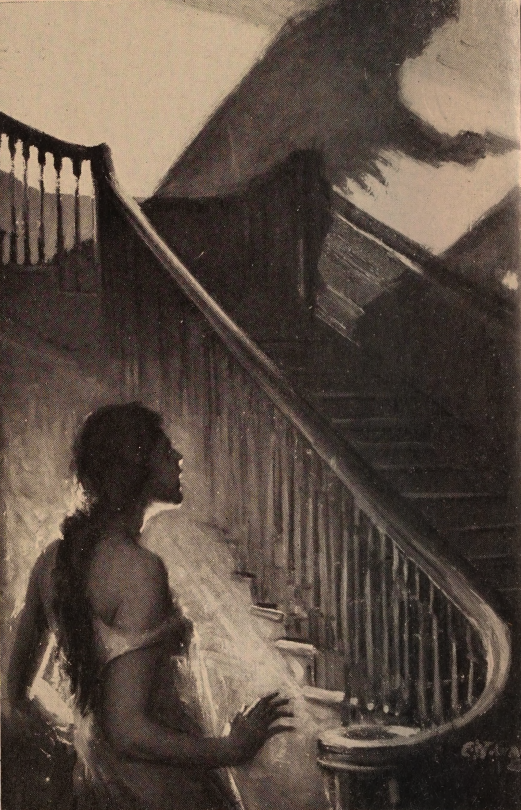
"The feeling that she was not alone took possession of her." The whisper on the stair. 1924. Frontispiece.
Internet Archive
More Posts from Absiesfeed and Others
While most folks were sitting down for supper, NASA tried to move a space mountain.
Beyond sight for backyard stargazers, a spacecraft the size of a vending machine self-destructed by ramming into a harmless asteroid shortly after 7 p.m. ET Monday, September 26th. The high-speed crash was part of the U.S. space agency's Double Asteroid Redirection Test, or DART.
The moment of impact marked the first time in history humans have attempted to alter the path of an asteroid, a flying chunk of rubble left over from the formation of the solar system about 4.6 billion years ago. Most of the time, these ancient rocks pose no danger to Earth, including Dimorphos, the one NASA just used for target practice. But at least three have caused mass extinctions, the most infamous of which wiped out the dinosaurs.
Stegosaurus didn't have NASA.
"We are changing the motion of a natural celestial body in space. Humanity has never done that before," said Tom Statler, program scientist. "This was the substance of fiction books and really corny episodes of Star Trek from when I was a kid, and now it's real."
(continue reading)
![René Magritte (Belgian, 1898-1967), Le Retour [The Return], C.1950. Gouache On Paper, 29.6 X 41.7 Cm.](https://64.media.tumblr.com/0be5882d20f8e9032ede2f744f490d59/575b2a0ae06f6121-60/s500x750/6f1652487abe806e96f84df096a6832d8b0b5dac.jpg)
René Magritte (Belgian, 1898-1967), Le retour [The Return], c.1950. Gouache on paper, 29.6 x 41.7 cm.



Keith Haring windsurfing with friends on a beach in Knokke-Heist, 1989.
Photos by Tseng Kwong Chi






MAIN HOON NA (2004)

Harlequin’s Carnival, 1925, Joan Miro
Medium: oil,canvas
La sonda DART de la NASA ha chocado contra un asteroide en la primera prueba de defensa planetaria
La sonda DART de la NASA ha chocado contra un asteroide en la primera prueba de defensa planetaria
La misión DART de la NASA ha chocado contra un asteroide para intentar variar su órbita. La ha lanzado contra una pequeña luna de un asteroide doble llamado Didymos , la sonda del tamaño un coche pequeño, llamada DART (Doble Asteroid Redirection Test), ha chocado deliberadamente contra la luna del asteroide llamada Dimorphos. Esto es solo una prueba, ya que ni el asteroide Didymos ni su luna…

View On WordPress

Repair Cafés
Repair Cafés are free meeting places and they’re all about repairing things (together). In the place where a Repair Café is located, you’ll find tools and materials to help you make any repairs you need. On clothes, furniture, electrical appliances, bicycles, crockery, appliances, toys, et cetera. You’ll also find expert volunteers, with repair skills in all kinds of fields.
Visitors bring their broken items from home. Together with the specialists they start making their repairs in the Repair Café. It’s an ongoing learning process. If you have nothing to repair, you can enjoy a cup of tea or coffee. Or you can lend a hand with someone else’s repair job. You can also get inspired at the reading table – by leafing through books on repairs and DIY.
There are over 1.500 Repair Cafés worldwide. Visit one in your area or start one yourself!
Read more…
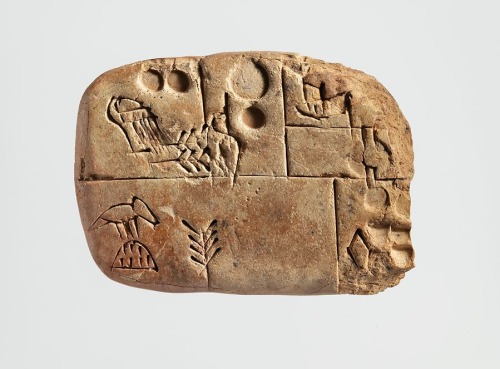
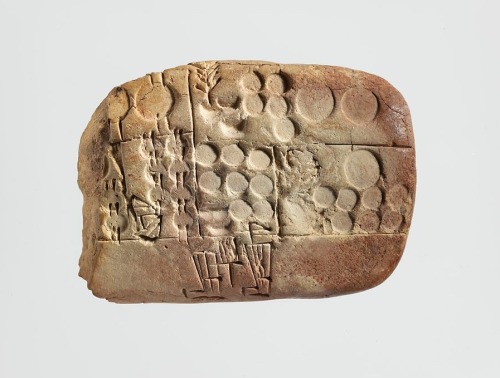
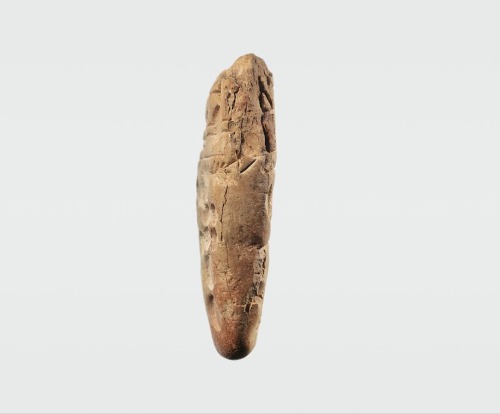
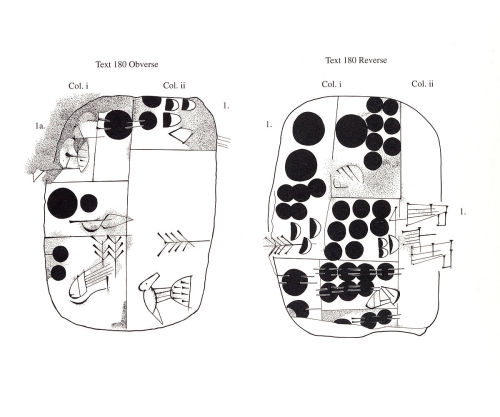
Sumerian cuneiform tablet (c. 3100 – 2900 BC). Administrative account recording the distribution of barley and emmer wheat. Probably from Uruk (Warka, Iraq).
The first system of writing in the world was developed by the Sumerians, beginning c. 3500 – 3000 BC. It was the most significant of Sumer’s cultural contributions, and much of this development happened in the city of Uruk.
A stylus was used to creat wedge-like impresssions in soft clay, and the clay was fired afterwards. The word “cuneiform” comes from the Latin cuneus, meaning “wedge”.
These wedge-like impressions were first pictographs, and later on phonograms (symbols representing vocal sounds) and “word-concepts” – closer to a modern-day understanding of words and writing. All the great Mesopotamian civilizations used cuneiform, including the Sumerians, Akkadians, Babylonians, Hatti, Hittites, Assyrians and Hurrians. Around 100 BC, it was abandoned in favour of the alphabetic script.
The earliest texts used proto-cuneiform, and were pictorial. Writing was a technique for noting down things, items and objects (e.g. Two Sheep Temple God Inanna). This system worked well for concrete, visible subjects, but could give little in the way of details. As subject matter became more intangible (e.g. the will of the gods, the quest for immortality), cuneiform developed in complexity to represent this.
By 3000 BC, the representations were more simplified. The stylus’ impressions conveyed word-concepts rather than word-signs – for example, the scribe could write about the more abstract concept of “honour”, rather than having to specifically depict “an honourable man”.
The “rebus” principle was used to isolate the phonetic (sound) value of a particular sign. Rebus is a device that combines pictures (or pictographs) with individual letters to depict words and/or phrases. For example, the picture of a bumblebee followed by the letter “n” would represent the word “been”. With the rebus principle, scribes could express grammatical relationships and syntax to clarify meaning and be more precise.
There are only a few examples of the use of rebus in the earliest stages of cuneiform (c. 3200 – 3000 BC). Consistent usage of rebus became apparent only after c. 2600 BC. This was the beginning of a true writing system, characterized by a complex combination of word signs and phonograms (signs for vowels and syllables).
By c. 2500 BC, cuneiform (written mostly on clay tablets) was used for a wide variety of religious, political, literary, scholarly and economic documents.
Now the reader of the tablet didn’t have to struggle with the meaning of a pictograph – they could read word-concepts that more clearly conveyed the scribe’s meaning. The number of characters used in writing was reduced from 1000 to 600, to make it simpler.
By the time of the famous priestess-poet Enheduanna (c. 2285 – 2250 BC), cuneiform had become sophisticated enough to convey not only emotional states such as love or betrayal, but also the reasons behind the writer’s experience of these states. Enheduanna wrote a collection of hymns to Inanna in the Sumerian city of Ur, and she is the first author in the world known by name.





Meera Bai;
“One night as I walked in the desert the mountains rode on my shoulders
and the sky became my heart,
and the earth - my own body, I explored.
Every object began to wink at me, and Mira wisely calculated thinking,
My charms must be at their height
now would be a good time to rush into his arms,
maybe He won't drop me so quick.”
-
 hopeveryonelikespancakes reblogged this · 4 weeks ago
hopeveryonelikespancakes reblogged this · 4 weeks ago -
 hopeveryonelikespancakes liked this · 4 weeks ago
hopeveryonelikespancakes liked this · 4 weeks ago -
 dusty-wings liked this · 1 month ago
dusty-wings liked this · 1 month ago -
 andromegyne reblogged this · 1 month ago
andromegyne reblogged this · 1 month ago -
 andromegyne liked this · 1 month ago
andromegyne liked this · 1 month ago -
 the-forest-trails reblogged this · 2 months ago
the-forest-trails reblogged this · 2 months ago -
 emo-girl99 liked this · 2 months ago
emo-girl99 liked this · 2 months ago -
 suckrfish liked this · 3 months ago
suckrfish liked this · 3 months ago -
 louisstephaneulysse reblogged this · 3 months ago
louisstephaneulysse reblogged this · 3 months ago -
 trojan-war reblogged this · 4 months ago
trojan-war reblogged this · 4 months ago -
 caninefangsgroundblunt reblogged this · 4 months ago
caninefangsgroundblunt reblogged this · 4 months ago -
 psych0d3l1c liked this · 4 months ago
psych0d3l1c liked this · 4 months ago -
 elle297382 liked this · 4 months ago
elle297382 liked this · 4 months ago -
 sweetlassisworld liked this · 4 months ago
sweetlassisworld liked this · 4 months ago -
 rosieposey-torturedpoet reblogged this · 4 months ago
rosieposey-torturedpoet reblogged this · 4 months ago -
 rosenamedjo liked this · 4 months ago
rosenamedjo liked this · 4 months ago -
 randman16 liked this · 4 months ago
randman16 liked this · 4 months ago -
 wildbythought reblogged this · 4 months ago
wildbythought reblogged this · 4 months ago -
 tiredtrashl liked this · 5 months ago
tiredtrashl liked this · 5 months ago -
 phobiael liked this · 5 months ago
phobiael liked this · 5 months ago -
 harif41 liked this · 5 months ago
harif41 liked this · 5 months ago -
 blackramhall reblogged this · 6 months ago
blackramhall reblogged this · 6 months ago -
 sakatsia liked this · 6 months ago
sakatsia liked this · 6 months ago -
 sanctifiedtongues reblogged this · 6 months ago
sanctifiedtongues reblogged this · 6 months ago -
 lightblueheartemoji reblogged this · 7 months ago
lightblueheartemoji reblogged this · 7 months ago -
 johnteagueart liked this · 7 months ago
johnteagueart liked this · 7 months ago -
 oooklathemok reblogged this · 7 months ago
oooklathemok reblogged this · 7 months ago -
 delugingmind reblogged this · 7 months ago
delugingmind reblogged this · 7 months ago -
 dominantblackmaster liked this · 7 months ago
dominantblackmaster liked this · 7 months ago -
 curatorofthisdigitalmorass reblogged this · 7 months ago
curatorofthisdigitalmorass reblogged this · 7 months ago -
 curatorofthisdigitalmorass liked this · 7 months ago
curatorofthisdigitalmorass liked this · 7 months ago -
 coolheartface reblogged this · 7 months ago
coolheartface reblogged this · 7 months ago -
 comicotica reblogged this · 7 months ago
comicotica reblogged this · 7 months ago -
 robutann liked this · 7 months ago
robutann liked this · 7 months ago -
 alexzehooman liked this · 7 months ago
alexzehooman liked this · 7 months ago -
 haboat reblogged this · 7 months ago
haboat reblogged this · 7 months ago -
 romano88 liked this · 7 months ago
romano88 liked this · 7 months ago -
 knight2382 liked this · 8 months ago
knight2382 liked this · 8 months ago -
 thegreatyin liked this · 8 months ago
thegreatyin liked this · 8 months ago -
 haboat liked this · 8 months ago
haboat liked this · 8 months ago -
 osmanthusoolong liked this · 8 months ago
osmanthusoolong liked this · 8 months ago -
 velvetlinedbox reblogged this · 8 months ago
velvetlinedbox reblogged this · 8 months ago -
 velvetlinedbox liked this · 8 months ago
velvetlinedbox liked this · 8 months ago -
 diosa-loba reblogged this · 8 months ago
diosa-loba reblogged this · 8 months ago -
 moviesaremylife liked this · 8 months ago
moviesaremylife liked this · 8 months ago
